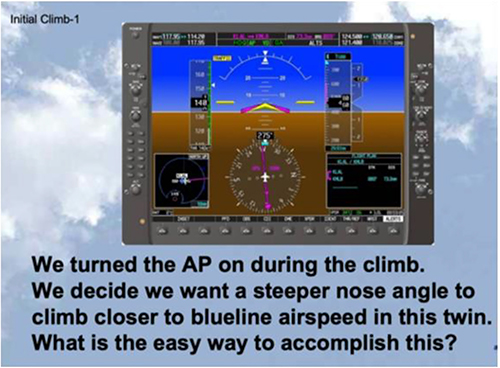by Michael J. “Mick” Kaufman
© Copyright 2024. All rights reserved!
Published in Midwest Flyer Magazine February/March 2024 Digital Issue
Over the many decades that I have been flying, there have been many changes made to aircraft, and almost all of them involve electronics and systems. The airplanes we fly have seen very little changes in aerodynamics comparatively speaking. They are not much faster or more fuel efficient than a decade ago, but how we navigate and control the aircraft have seen massive changes. This is not necessarily for the better, as we have – or should I say – the FAA has lost control in managing this situation. So, where does this leave the pilot doing an avionics upgrade and the flight instructor, who must teach students to safely use this equipment? It is not in a manual, as we have so much mixing of components.
Along with a colleague and fellow instructor, we decided to put together a PowerPoint presentation for our Bonanza/Baron Pilot Training Program to help our customers and instructors better understand their avionics. We may offer it to pilots flying other types of general aviation aircraft in the future as well and may possibly make the course available on-line.
There have been many hours of research involved in putting together this program, and it will be expanded to encompass more boxes in the future. Our program currently includes the Garmin GFC-500, 600, 700, and the S-TEC autopilots interfaced with Garmin navigators and primary flight displays. We have addressed the different firmware updates as well and how that my affect the operation.

When Garmin began to manufacture avionics after their highly successful 430/530 navigators, it started with the G1000 package, which was only to be installed in new aircraft from the manufacturer. They then introduced their first autopilot to the package. The first G1000 packages did not yet have WAAS, which was added later for a huge upcharge. Later, Garmin introduced the G-950 for experimental aircraft and then began avionics upgrades for the entire general aviation fleet.
Pilots having recently spent a small fortune on an Aspen display, now wanted to upgrade their navigator from a Garmin 430 to a Garmin 650 and GFC 500 autopilot. Supposedly, the units should play well together, but they did not. A firmware update was necessary, but Garmin would not release information to Aspen to do that upgrade, and the story goes on.
After the introduction of the G-36 Bonanza with the Garmin G1000 package, which was released, I went to Flight Safety in Wichita to get my training. Cirrus was the first to introduce pilots to flying “glass panel” aircraft, and it was obvious that other manufacturers needed to follow or lose the market share of new aircraft sales. A glass cockpit was probably the biggest change that has occurred in aircraft navigation in several decades.
With most of Garmin’s primary flight displays and autopilots based on the G1000 package, our presentation begins with this package. We present the power-point training program by using an XC flight between two airports and cover each phase of the flight beginning with programming the navigator, copying clearances, and amending the route. We address each of the different avionics’ boxes individually, and there is quite a difference in identifying which buttons to press or which menu to search.

We create different scenarios, then address how we might accomplish each one using the different avionics boxes that might be in the aircraft. With so many combinations of equipment connected, there is a definite learning curve that cannot be totally achieved from reading a manual, and sometimes the manual is wrong. We need to dig deeper to find what works and what does not.
I urge all pilots to get individual training when getting that new avionics upgrade to become a safer pilot when moving from legacy avionics to glass.
EDITOR’S NOTE: Michael J. “Mick” Kaufman is a Certified Instrument Flight Instructor (CFII) and the program manager of flight operations with the “Bonanza/Baron Pilot Training” organization. He conducts pilot clinics and specialized instruction throughout the U.S. in many makes and models of aircraft, which are equipped with a variety of avionics. Mick is based in Richland Center (93C) and Eagle River, Wisconsin (KEGV). He was named “FAA’s Safety Team Representative of the Year” for Wisconsin in 2008. Readers are encouraged to email questions to captmick@me.com, or call 817-988-0174.
DISCLAIMER: The information contained in this column is the expressed opinion of the author only, and readers are advised to seek the advice of their personal flight instructor and others, and refer to the Federal Aviation Regulations, FAA Aeronautical Information Manual, and instructional materials before attempting any procedures discussed herein.